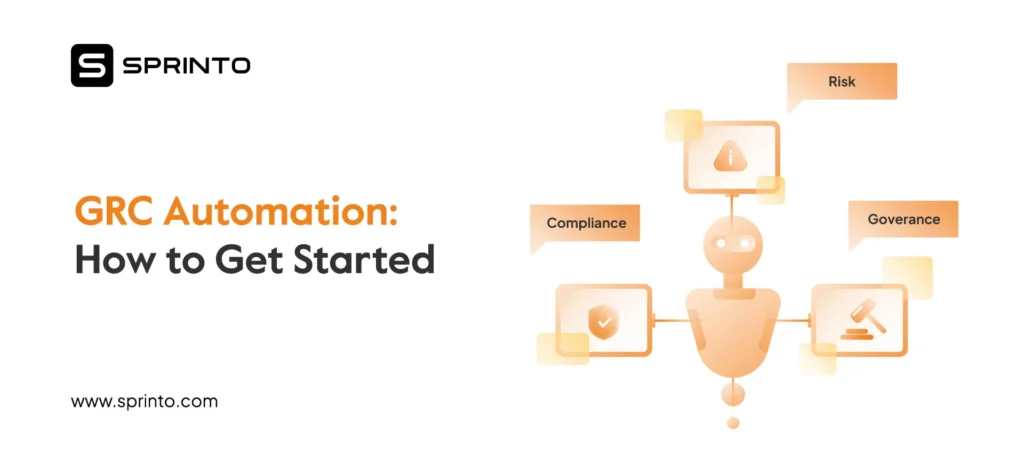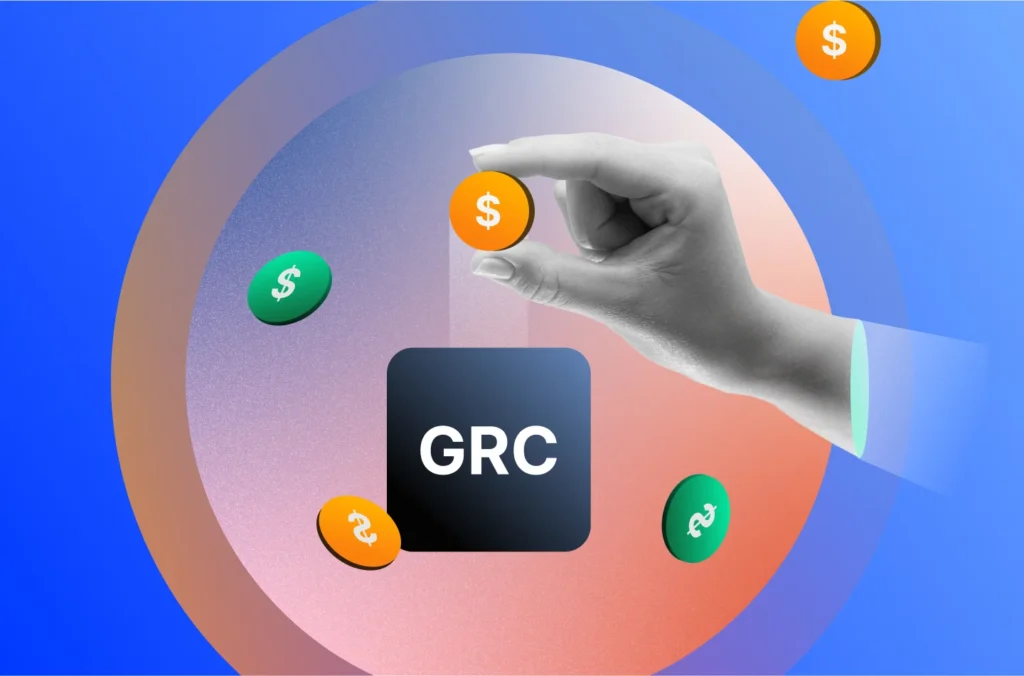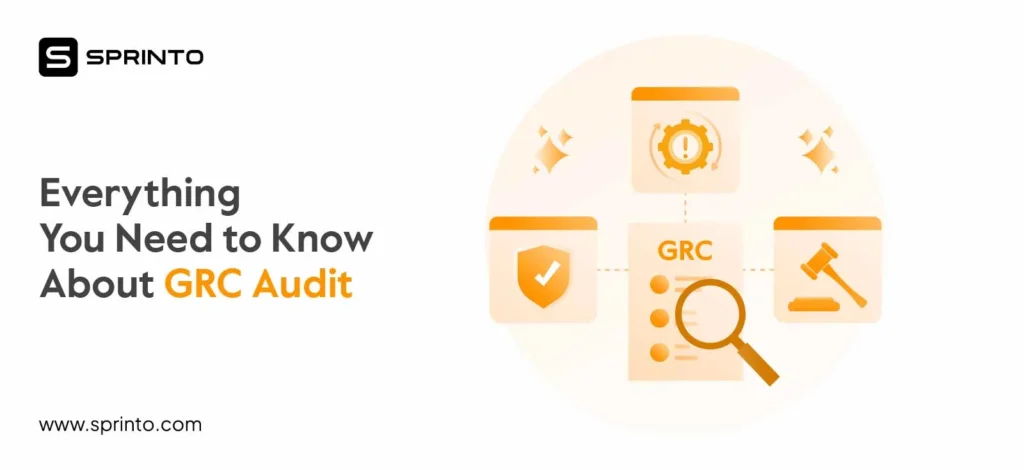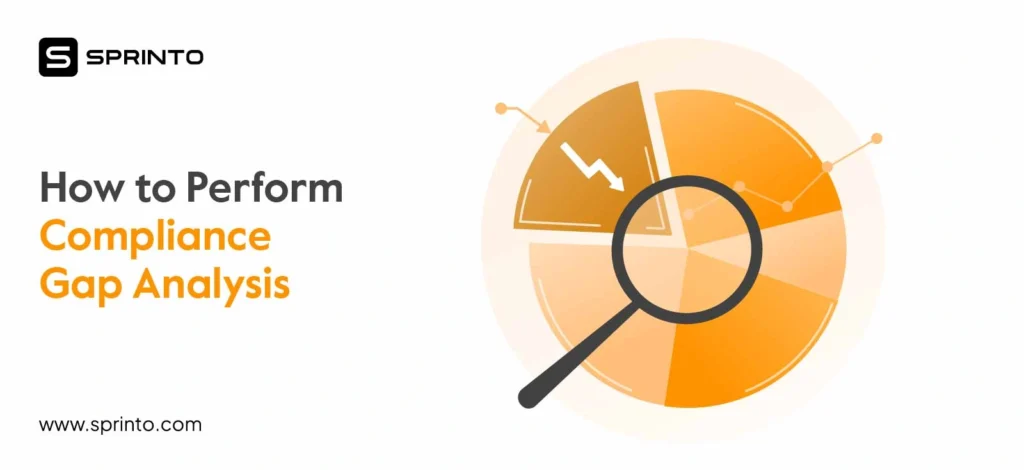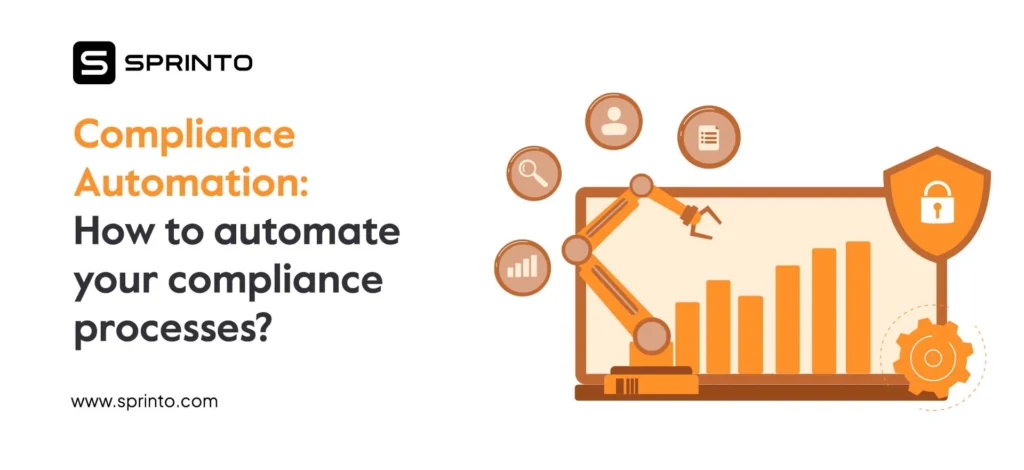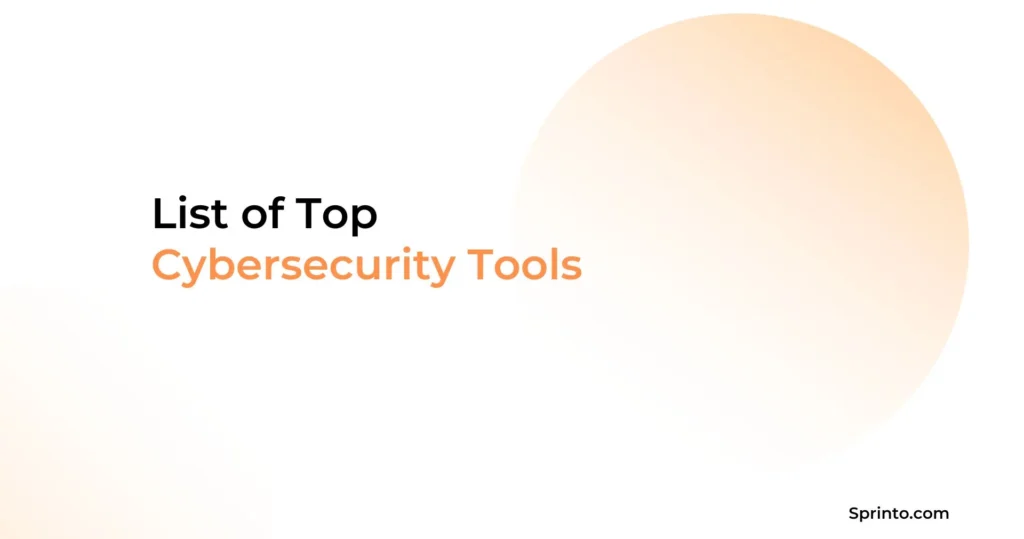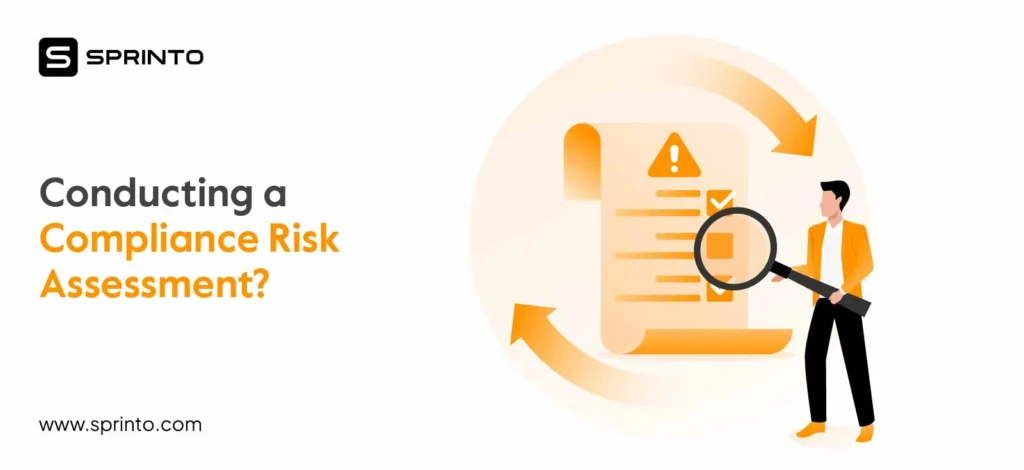In an age where cyberattacks, vendor breaches, and regulatory heat can cripple operations overnight, a strong GRC risk management process keeps modern businesses standing when things go wrong. It helps teams spot threats early, understand their impact, and take action before small issues snowball into full-blown crises.
Take Mondelez International’s 2023 data breach. When one of its third-party legal partners was hacked, sensitive employee data, home addresses, social security numbers, and birth dates were exposed. The incident didn’t just dent trust; it highlighted how even Fortune 500 companies can be blindsided when their GRC risk management framework isn’t watertight. In 2025, with rising third-party dependencies and evolving compliance demands, organizations must integrate governance, risk, and compliance into one connected process that builds resilience.
Quick Summary in 60 Seconds
GRC Risk Management: A structured process for identifying, assessing, and mitigating security, compliance, financial, and operational risks within an organization’s governance framework.
Purpose: To reduce vulnerabilities, ensure regulatory alignment, and integrate risk management with strategic business operations.
Key Steps:
1. Build a GRC risk strategy
2. Engage stakeholders across departments
3. Conduct risk assessments
4. Define and implement a risk response plan
5. Apply preventive, detective, and corrective controls
6. Continuously monitor effectiveness and environmental changes
7. Automate wherever feasible for scale and accuracy
Core Controls:
• Preventive (access control, firewalls)
• Detective (IDS, log monitoring)
• Corrective (data backup, patching)
Key Benefits:
• Reduces compliance risk
• Improves decision-making
• Enhances operational efficiency
• Strengthens cybersecurity and stakeholder trust
Why Sprinto?
Sprinto turns complex GRC risk processes into streamlined, auditable workflows with automation, real time monitoring, prebuilt templates, and an intelligent risk engine.
What is GRC risk management?
GRC risk management is a structured approach to managing various operational, security, financial, and legal risks across the cloud infrastructure. It involves identifying IT risks, analyzing their impact, monitoring the risk environment, determining mitigation strategies, and developing business continuity plans.
The ultimate goal of risk management is to meet business goals and stakeholder expectations with minimum roadblocks. IT teams generally prioritizes risks based on the risk appetite, history of incidents, business objectives, and regulatory requirements among others.
Though the risk management lifecycle heavily relies on technology, people, processes, and policies also factor in to add resilience to your assets. Two of the most common methods to find risks are internal audits and risk assessments.
How is GRC risk management from standard risk management?
GRC risk management differs from standard risk management in both scope and intent. Standard risk management typically focuses on identifying, analyzing, and mitigating risks that could impact operations, finances, or projects. It’s often reactive—dealing with risks within a single function or department and addressing them as they emerge. In contrast, GRC (Governance, Risk, and Compliance) risk management takes a broader, integrated approach. It aligns risk practices with governance structures and compliance obligations, ensuring that every decision and process supports organizational integrity, accountability, and regulatory readiness.
“If you don’t invest in risk management, it doesn’t matter what business you’re in, it’s a risky business.” – Gary Cohn, Director of the U.S National Economic Council
Build a strong GRC foundation with Sprinto
Why is GRC risk management crucial for any organization?
GRC risk management is crucial because it helps organizations connect leadership, operations, and compliance so that decisions aren’t made in isolation or without full context. When these elements work together, leaders can identify risks early, prioritize them based on impact, and allocate resources where they matter most. This clarity prevents duplication of effort, reduces compliance fatigue, and keeps teams aligned on what’s actually critical to the business.
In practice, it’s about integrating risk intelligence into every operational layer. When control testing, incident tracking, and compliance mapping are automated and connected, decision-makers get real-time visibility into where vulnerabilities exist. This makes it easier to assess residual risk, validate control effectiveness, and link every finding back to a business objective or regulatory requirement. A mature GRC setup also enables cross-framework alignment, so a single control can satisfy ISO 27001, SOC 2, and GDPR simultaneously. In simple terms, it transforms compliance from an overhead function into a vital part of how the business operates securely and efficiently.
GRC risk management process: a detailed blueprint to success
While there is no objective or right way to manage risks in a GRC, we have curated an approach that is approved by auditors and recommended by industry experts like CISOs, NIST guidelines, International Risk Governance Council.
These steps provide a structured approach to a GRC risk management process:
1. Build a GRC strategy
Having a working plan detailing a roadmap aligned with your goals and specific to your industry is crucial to understand your risk landscape as it is a complex undertaking.
A critical piece of building block to consider at the strategy building stage should be the risk tolerance level. Understanding this bit gives management sufficient context to make the risk decisions, frame privacy policies, and respond adequately.
Your GRC risk strategy should also address how risks impact individuals, operations, and the bottom line. The strategy could be a single document or multiple documents for separate risks and threats.
A key component of devising a strategy is writing the policies. Your policies should be comprehensive to cover all types of risks that affect business objectives such as:
- Third-party risk management
- Vendor risk management
- Data protection risk assessment
- Information security policy management
- Supplier security policy
| Strategy Component | Why It Matters |
| Risk Tolerance Definition | Guides how much risk the organization is willing to accept and informs decision-making. |
| Policy Development | Establishes expectations and ensures consistency in compliance and control execution. |
| Data Protection and Privacy Framework | Protects sensitive assets and ensures alignment with regulations like GDPR or HIPAA. |
| Third-Party and Vendor Governance | Addresses external dependencies and supply-chain risks. |
| Continuous Improvement | Keeps the strategy relevant amid changing threats and compliance landscapes. |
Also check: Top GRC Tools Comparison with Features & Reviews
2. Engage all stakeholders
To bring your risk management plan to life, everyone involved must understand their role and how it connects to the organization’s broader GRC goals. This includes leaders setting direction, technical teams managing systems, and external partners ensuring compliance and accountability. Collaboration across these groups strengthens how risks are identified, evaluated, and addressed.
Who are the key stakeholders in GRC risk management?
- CISO / Security Leadership – guides overall risk governance and security strategy.
- IT Teams – manage infrastructure, systems, and data protection.
- Compliance Officers – ensure adherence to legal, regulatory, and framework requirements.
- Auditors and Vendors – validate controls, assess third-party risks, and provide objective insights.
The International Risk Governance Council (IRGC) outlines four phases where these stakeholders play vital roles. During pre-assessment, risk managers frame the organization’s risk posture and define responsibilities. In risk appraisal, they evaluate both technical and socio-economic factors. The risk decision phase focuses on determining how to handle identified risks, whether to accept, mitigate, transfer, or tolerate them, with stakeholder input ensuring business and compliance priorities align. Finally, risk management consolidates insights into actionable plans and tracks their execution.
3. Conduct risk assessments
Risk assessment helps teams to understand the gap between the goal and the current posture. This insight helps to determine the corrective measures and implement controls.
Risk assessments are not a point-in-time activity. Rather, it is a recurring one due to the dynamic nature of the threat landscape. It generally involves the following steps:
- Know your sources: Identify all common threat sources and their characteristics. To do this, assess the intentions, capabilities, and targets for adversarial (threats arising from external malicious actors) vulnerabilities. Assess the potential range of impact for non-adversarial (unintentional or internal) vulnerabilities.
- Identify the vulnerabilities: A vulnerability assessment helps you understand the extent to which the identified threats can affect your organization. Determine the mitigation strategies and select the appropriate controls based on the severity of the vulnerabilities.
- Assess the likelihood of adverse impact: The next step is understanding how susceptible your organization is to each vulnerability. To evaluate this, you should know the characteristics of the threat’s sources, existing vulnerabilities, intent, and the effectiveness of your controls or measures to prevent the threat from being successful.
- Evaluate the impact: Once you know the impact, determine the adverse effects of threat events in terms of the potential damage they can inflict. Impact assessment involves identifying the potential targets of the threats, the people, and even physical resources.
- Determine the risks: Finally, determine the severity of the risks your organization faces based on the impact of the threat and the probability of its success. You can score the risks in order of severity to prioritize high-risk events. The result of risk scoring will be used to plan the next steps—your response plan.
4. Determine a response plan
The risk assessment should give you a fair idea of the risks and overall posture. Use the assessment result to determine the right actions – accept, avoid, mitigate, or transfer the risks. This decision will be based on your risk tolerance level; the level of uncertainty your organization can absorb without impacting key operations. Let’s break down these
- Accept: If the identified risk is within the tolerable range, you can choose to accept it. The impact of the accepted risk can be evaluated in terms of low, moderate, or high. This depends on the specific situation and consequences of not accepting it.
For example, if your organization is located in an earthquake prone zone, you may accept the risks of earthquakes to data centers if the cost of addressing it is lower than the possible damage, given that the chances of the damage is very low.
Similarly, if you are a federal agency responding to a time-sensitive situation like a bank heist, it is acceptable to share sensitive information with unauthorized personnel.
- Avoid: If the cost of accepting the risk exceeds the tolerance limit, we recommend avoiding it.
In certain situations, organizations conduct certain activities or use a new technology that adds unacceptable risks to the IT infrastructure. In such cases, the ideal response is to halt the activity altogether, rather than devising methods to mitigate its associated risks.
For example, let’s say you want to set up a connection with a third-party domain that adds unacceptable risks to your systems. In this case, avoiding the risk is recommended if using controls is not a practical solution.
- Mitigate: When you cannot accept, avoid, transfer, or share, mitigating it is the appropriate response. An example of risk mitigation is developing policies that prevent users from traveling with organization owned endpoint devices to prevent malicious actors from gaining unauthorized access.
- Share: If your organization has the option to shift the liability or responsibility of risk management to another entity or organization, transfer the risk.
It is important to note that this practice is not an alternate solution to mitigate or avoid; transferring risks does not reduce the probability of threat events or minimize their impact. For this reason, risk sharing is not as widely adopted in the public sector compared to the private sector as the former is liable to government legislation.
Ideally, risks are transferred if it is determined that the receiving party has the capacity, resources, and expertise to mitigate them better.
For example, if an organization lacks adequate physical security to protect its hardware assets, partnering with another organization to share a facility reduces the likelihood of a physical compromise.
Must check: Benefits of GRC – Why Siloed Approach No Longer Works
5. Implement the right controls
To mitigate risks that cannot be accepted or transferred, you need to implement the right controls. Each control should address a specific risk and fulfill one or multiple objectives, such as minimizing risks, reducing cost, meeting regulatory requirements, and so on.
Risk management controls can be broadly classified into preventive, detective, and corrective.
Preventive controls are the first line of defense against threats. These are proactive measures that aim to stop them from being executed in the first place.
However, practically speaking, it is not possible to stop 100 percent of incidents successfully due to the continuously evolving nature of threats.
Examples of preventive measures include:
- Access control to systems, files, or applications to prevent unauthorized access
- Firewall to block unauthorized access to networks and cloud-hosted systems
- Employee training and security awareness programs to prevent
Detective controls help to identify threats that have already infiltrated or contaminated your system. These are reactive in nature, compared to preventive controls that are proactive.
Similar to preventive controls, detective measures are also not always 100 percent effective as sophisticated threats may escape the radar.
Examples of detective controls are:
- Intrusion detection systems that monitor networks and files for suspicious activities or violation of policies
- Log monitoring systems that review activity logs generated at a specific time or for a specific system to identify anomalies
- Internal audits to identify instances of non-compliance and vulnerabilities
Corrective controls are implemented to control and remediate damages after it has already been inflicted and minimize the risks of a similar incident in the future.
These controls are designed to help IT teams minimize the impact of threats on time before they inflict significant damage.
Examples include:
- Data backups to recover from incidents like data theft, data tampering, and data loss
- Patch management process to close gaps or vulnerabilities that caused the incident
- Business continuity plans to recover from an incident without disrupting operations
Some controls combine all three control capabilities in one. For example, antivirus tools block malware or malicious codes from running on your computer, acting as preventive control. Secondly, it continuously monitors your systems for corrupted files or viruses, acting as a detective control. Finally, it removes malicious files or codes that have penetrated your system, like a corrective control.
A widely adopted approach to GRC risk management processes is the use of common controls. If the functionality of a control applies to more than one system or program, it qualifies as a common control. Incident response controls, authentication controls, audit and accountability controls, and access controls are good examples.
6. Continuously monitor your control environment
6. Continuously monitor your control environment
Once you have implemented the controls, the next step to the GRC risk management process is to continuously monitor them. This helps to ensure that you have adopted the right measure to comply with a compliance requirement, evaluate its effectiveness, and identify risk-inducing changes to your environment.
Monitoring Metrics
| Metric | Why Monitor |
| Compliance Alignment | To ensure controls continue to meet relevant regulatory and framework requirements (e.g., ISO 27001, SOC 2, GDPR). Over time, changes in processes, regulations, or technologies can cause previously compliant systems to drift. Regular monitoring of compliance indicators helps detect non-conformities early, analyze their root causes, and re-align measures before they evolve into audit findings. This proactive oversight sustains continuous compliance and reduces remediation workload during audits. |
| Control Effectiveness | To confirm that implemented controls are not only in place but also functioning as intended to reduce risks to acceptable levels. Merely deploying a control doesn’t guarantee mitigation, its design, implementation context, and supporting processes determine actual performance. Measuring control effectiveness helps identify residual risk, assess control reliability, and justify continued investment or redesign. It forms the backbone of an adaptive risk management approach. |
| Incident Trends | To identify recurring control failures, emerging threat patterns, or weak process areas that contribute to incidents. Trend monitoring provides a longitudinal view of how often incidents occur, where they happen, and which controls fail repeatedly. This insight supports prioritization of corrective actions, strengthens incident response strategies, and informs the refinement of both preventive and detective controls. |
| Change Tracking | To detect configuration, process, or personnel changes that could compromise control integrity. Every environment evolves, new tools, users, or workflows can alter the risk landscape. By tracking these changes, organizations can quickly determine whether existing controls remain valid or need recalibration. Effective change monitoring minimizes unintended risk exposure and maintains control relevance in dynamic environments. |
| Control Test Results | To validate control performance through periodic or automated testing. Continuous evaluation of control test outcomes reveals degradation, misconfigurations, or inconsistencies between expected and actual behavior. Monitoring these results ensures accountability, provides audit-ready evidence, and promotes a data-driven view of control health. It also strengthens confidence in your GRC program’s ability to detect and mitigate risks promptly. |
How do you measure the effectiveness of your GRC controls?
Your IT environment and operational systems are continuously changing, including new processes, administrators, policies, and technologies. These changes may introduce new vulnerabilities and shift the risk profile of the entire organization.
To stay ahead of these uncertainties, it is essential to monitor changes and update control measures as needed.
The frequency of monitoring should be determined by factors such as the potential impact of unaddressed risks, the frequency of changes in the operating environment, and the rate at which risks are changing.
7. Adopt automation techniques
Broadly speaking, there are two approaches to GRC risk management processes – manual and automated.
While the manual method works, automation is recommended if feasible. This is because manual processes are not sustainable in the long term as scaling adds more complexity, processes, tools, and requirements – making it error prone, slow, and resulting in disconnected processes.
Automated systems, on the other hand, are more efficient, faster, sustainable, and cost-effective in the long run. For example, GRC tools like Sprinto help you run a risk management program. Some of its key capabilities are:
- Integrated risk assessment: Map all risk to the right control or compliance criteria to minimize the impact of risks, reduce residual risk and correctly assess risk impact based on industry benchmarks.
- Risk monitoring: Continuously and accurately monitors risks, flags anomalous activities, and contextualizes each control failure. The role-based remediation system notifies issues to the risk owner on time to ensure timely resolution.
- Eliminate silos: Consolidate risk information against any compliance framework like SOC 2, ISO 27001, NIST, and more into a single dashboard. A comprehensive risk profile helps you gain clarity on the transferred, mitigated, and accepted risks.
- Score risks: Use a pre-built risk library to scope out risks, add custom risks, and assign impact scores and likelihood of recurrence. Build a risk thorough risk register that identifies risks unique to your business and ensure accurate risk assessment.
- Manage risk policies: Access a library of pre-build, fully customizable risk policy templates. The policy control center facilitates one click acknowledgement, automatically maps polices to framework, and policy sharing with auditors.
- Quantify risks: Go beyond just identifying risks by evaluating them based on its impact using benchmarks to understand the actual impact of risks, determine their severity, and start the treatment process.
- Reuse common controls: Manage risks across multiple compliance requirements using predefined mapping criteria. This way, you can reuse and cross-map controls from existing frameworks to eliminate effort duplication.
- Calculate risk mitigation health: Use the risk mitigation health parameter to calculate the average health of a control linked to a risk. This helps you understand the percentage of completed checks that are mapped to controls.
- Risk reporting: Capture the status of risks and controls with detailed and easy to understand reports based on real-time data. Get a granular picture of risk status from a single view, identify patterns, and make accurate risk decisions.
- Vulnerability assessment: Proactively measure risks by running automated checks on vulnerability controls and prioritize risk remediation based on policies. Integrate with multiple vulnerability scanning tools to get an accurate view of risks.
Want to see how Sprinto works?
Integrated Risk Management vs. GRC Risk Management
Both Integrated Risk Management (IRM) and GRC Risk Management deal with handling risks, but they take different approaches.
- GRC Risk Management is more about staying compliant and ensuring risks are managed within regulatory requirements. It focuses on policies and controls and ensures everything is aligned with governance and compliance rules.
- Integrated Risk Management takes a bigger-picture approach. It looks beyond compliance and focuses on all types of risks, operational, strategic, and business continuity. It helps organizations make smarter decisions by integrating risk management into daily operations.
Requirements and benefits of GRC risk management
Requirements:
To build a strong GRC risk management framework, organizations need:
- A clear risk management framework aligned with governance and compliance needs.
- Defined policies, procedures, and controls to manage risks effectively.
- Regular risk assessments and continuous monitoring to identify threats.
- Strong reporting and documentation for audits and compliance checks.
- Integration with business operations to ensure risk management is proactive.
Benefits:
When done right, GRC risk management offers several advantages:
- Reduces compliance risks and ensures regulatory alignment
- Improves decision-making with better risk visibility
- Enhances operational efficiency by streamlining risk processes.
- Strengthens cybersecurity and data protection measures
- Builds trust with stakeholders by demonstrating strong risk governance

FAQs
What is GRC risk analysis?
GRC risk analysis helps discover your organization’s risks, how serious they are, and what you can do to handle them. It’s about staying prepared and avoiding surprises.
What are GRC risk solutions?
GRC risk solutions are tools or systems that help you manage risks easily. They make it simple to track, monitor, and fix issues without a lot of manual effort.
What is GRC management?
GRC management integrates governance, risk, and compliance. It helps you stay organized, comply with rules, and keep your business running smoothly.
What is the GRC risk register?
A GRC risk register is just a list of all your business’s risks, how bad they could be, and what you’re doing to deal with them. It helps you stay on top of everything.
What are the types of risk in GRC?
In GRC, common business risks include financial risk, reputational risk, operational risk, cyber risk, non-compliance with government regulations, lack of effective governance, and more.
What are the best software solutions for GRC risk management?
Some of the best solutions for managing GRC risks based on popularity, user feedback, and industry reports are Sprinto, Secureframe, AuditBoard, Workiva, Hyperproof, Vanta, and LogicGate Risk Cloud.
How do you mitigate risk in GRC?
To mitigate risks in a GRC module, develop a risk management plan, include stakeholder inputs, conduct risk assessment, determine a mitigation plan, implement
Want to see how Sprinto works? Get a demo to know how we can help you.
Anwita
Anwita is a cybersecurity enthusiast and veteran blogger all rolled into one. Her love for everything cybersecurity started her journey into the world compliance. With multiple certifications on cybersecurity under her belt, she aims to simplify complex security related topics for all audiences. She loves to read nonfiction, listen to progressive rock, and watches sitcoms on the weekends.
Explore more
research & insights curated to help you earn a seat at the table.










